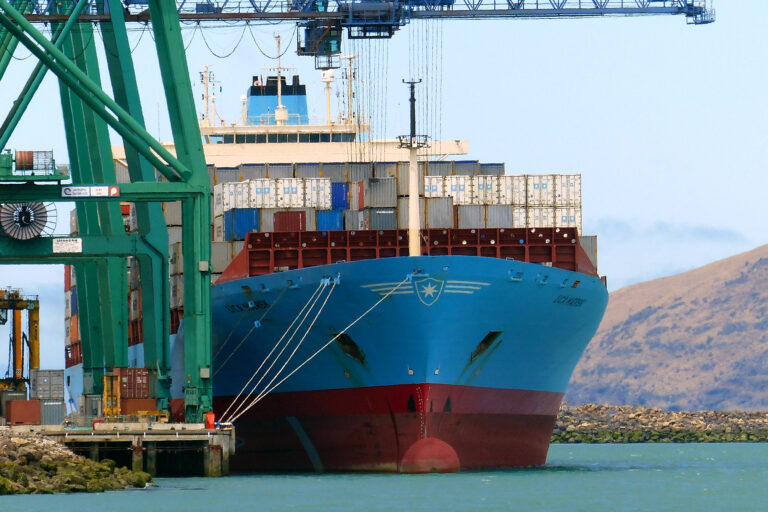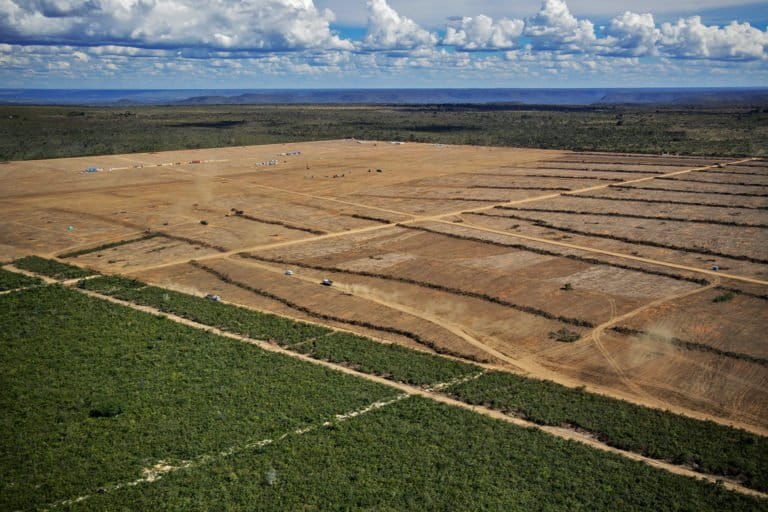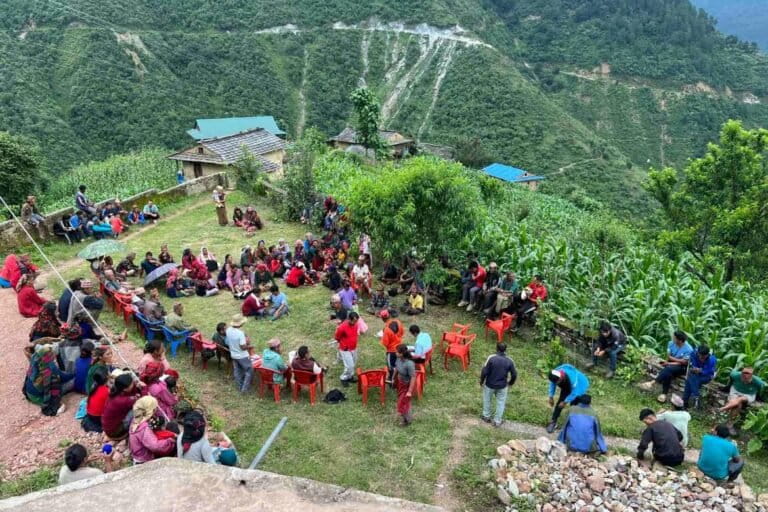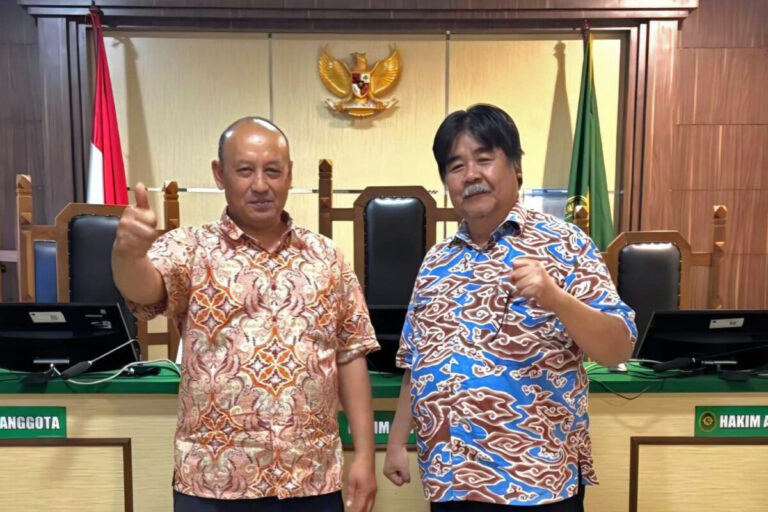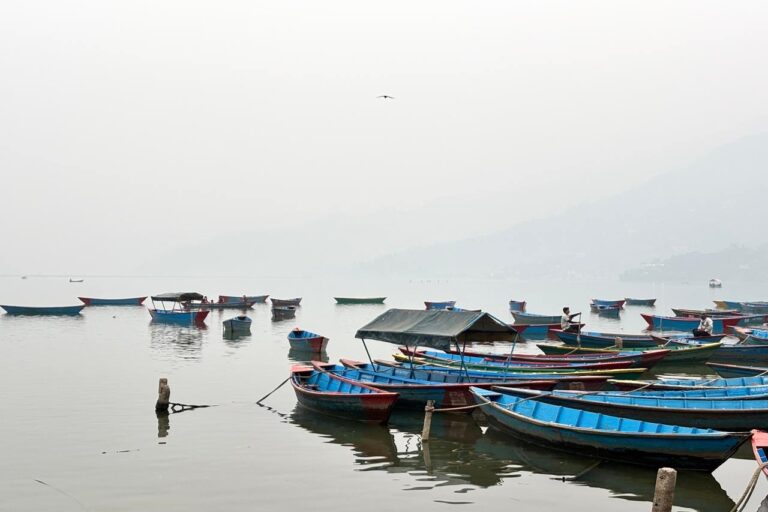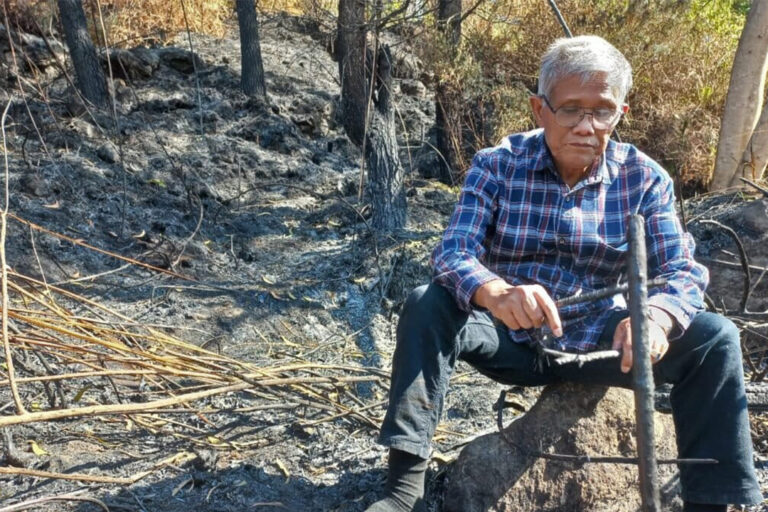- Seaweed farmers in Indonesia are losing out on revenue from their harvests as a result of erratic weather patterns and warming waters — signs of climate change impacts.
- The warming seas encourage the growth of a bacteria that attacks the commercially valuable Eucheuma cottonii species of seaweed.
- To avoid this, farmers are harvesting their crops earlier, before the seaweed grows to the optimal size, giving them a smaller yield and lower revenue at the market.
- The farmers have devised some workarounds to adapt to the situation, but say these solutions can’t be sustained in the face of a changing climate.
WEST SERAM, Indonesia — It’s a sunny day off the coast of Piru village on the island district of West Seram, in Indonesia’s Maluku province. La Samiun and his wife are out on their wooden boat, along with a cargo of three sacks of seaweed seedlings.
Over the course of the day, they’ll attach the seaweed to a single nylon rope strung between two piles, then lower the line underwater where the seaweed will grow until it’s ready for harvest.
La Samiun says he hopes it takes the usual 45 days or so until he can harvest the seaweed. But he’s well aware, like many other seaweed farmers in this region, that he may have to harvest it sooner, when it hasn’t grown quite as big as he’d like — and thus fetch a lower price than he’d hoped for — because of increasingly unpredictable weather patterns.
“The east monsoon wind was supposed to have started in April. In reality, it’s still the west monsoon wind,” La Samiun tells Mongabay Indonesia. He wonders aloud whether climate change is the cause for the shifting monsoon seasons.

For Indonesian seaweed farmers like La Samiun, both the east and west monsoon winds and their predictability play a huge role in the planting strategy and growth of Eucheuma cottonii seaweed, a commercially valuable species whose extract is used in the food and cosmetics industries as a gelling agent. The east wind, characterized by the dry season, creates the ideal conditions for the seaweed to grow, while the west wind brings rain that farmers believe slow the growth of the plants.
Ramli, a seaweed farmer from Wael village, near Piru, says he began noticing the shift in the monsoon period in 2020.
“The east monsoon wind used to blow in March. Between 2020 and 2022, it shifted to April,” he says. “It seems that this year it will miss the prediction again.”
Ramli blames this change for the slower pace of growth of his seaweed, saying that if he doesn’t harvest while it’s still at a suboptimal size, the seaweed succumbs to a bacterial infestation that causes it to harden and whiten. That’s because when the sea surface temperature hits 31-32° Celsius (88-90° Fahrenheit), certain bacteria in the water grow faster than normal and start attacking E. cottonii and other marine organisms.
Indonesia’s national meteorological agency says the country is expected to hit the peak of the dry season around July and August this year. Muhammad Fadli, lead researcher in physics oceanography at the National Research and Innovation Agency (BRIN), says the changing local climate between 2020-2022 was likely worsened by La Niña, a cyclical climate phenomenon that pushes warm water toward Asia region. Along with its counterpart, El Niño, it typically occurs once every few years.
But climate change may have shortened the period for each phenomenon, subsequently changing the pattern for the monsoon winds, Fadli says.
“In 2023, there’s still La Niña and it doesn’t seem to be ending soon,” he says. “The seaweed farms will be very disrupted.”

The shifting monsoon season has prompted seaweed farmers to adopt new techniques in response. La Samiun says he now visits his seaweed farm on sunny and windy days to raise the rope to the surface in an effort to prevent any bacteria from developing on the seaweed. On rainy days, he sinks the line a little deeper.
“The reason for this is to prevent [the seaweed] from catching disease,” La Samiun says.
But the bacterial infestation can only be delayed for so long in these warming waters, and an early harvest is the only way to ensure it doesn’t take hold of the seaweed crop. For the farmers, this means hauling in less seaweed that they planned for, leaving them with less money from the sale.
Indonesia was the biggest producer of the E. cottonii before 2014, growing more than 8 million metric tons a year. Today it’s second to China, but still accounts for 38% of the global supply of this red seaweed.
The industry took a massive blow from 2014-2016 when farms were hit by the bacterial disease, triggered by a rise in water temperature and changes in salinity and light conditions, the typical signs of a changing climate.
The value of the global seaweed market in 2017 was more than $4 billion, and is estimated to exceed $9 billion by 2024. E. cottonii accounts for 90% of this market. In addition to its uses in the food and cosmetics industry, the seaweed is also being explored for alternatives uses, including as biomass for fuel, as well as for use in fertilizers, animal feed, and wastewater treatment.

Syahidin Ali Maruf, another seaweed farmer from Wael village, says his strategy to deal with the impacts of a changing climate is to keep changing his farm site according to weather patterns. But he says he’d prefer a return to a more predictable climate.
“If it continues to be unstable, there’s little we can do,” he says.
This story was reported by Mongabay’s Indonesia team and first published here on our Indonesian site on July 4, 2023.
See related to this article:
In race for a sustainable alternative to plastic, Indonesia bets on seaweed
FEEDBACK: Use this form to send a message to the author of this post. If you want to post a public comment, you can do that at the bottom of the page.







